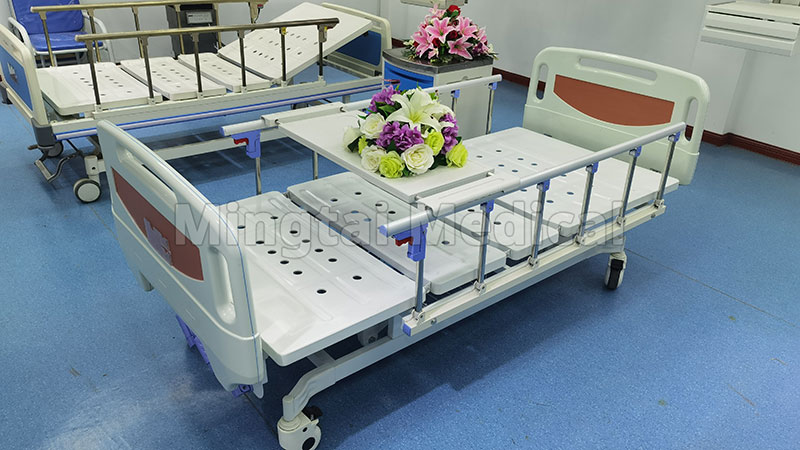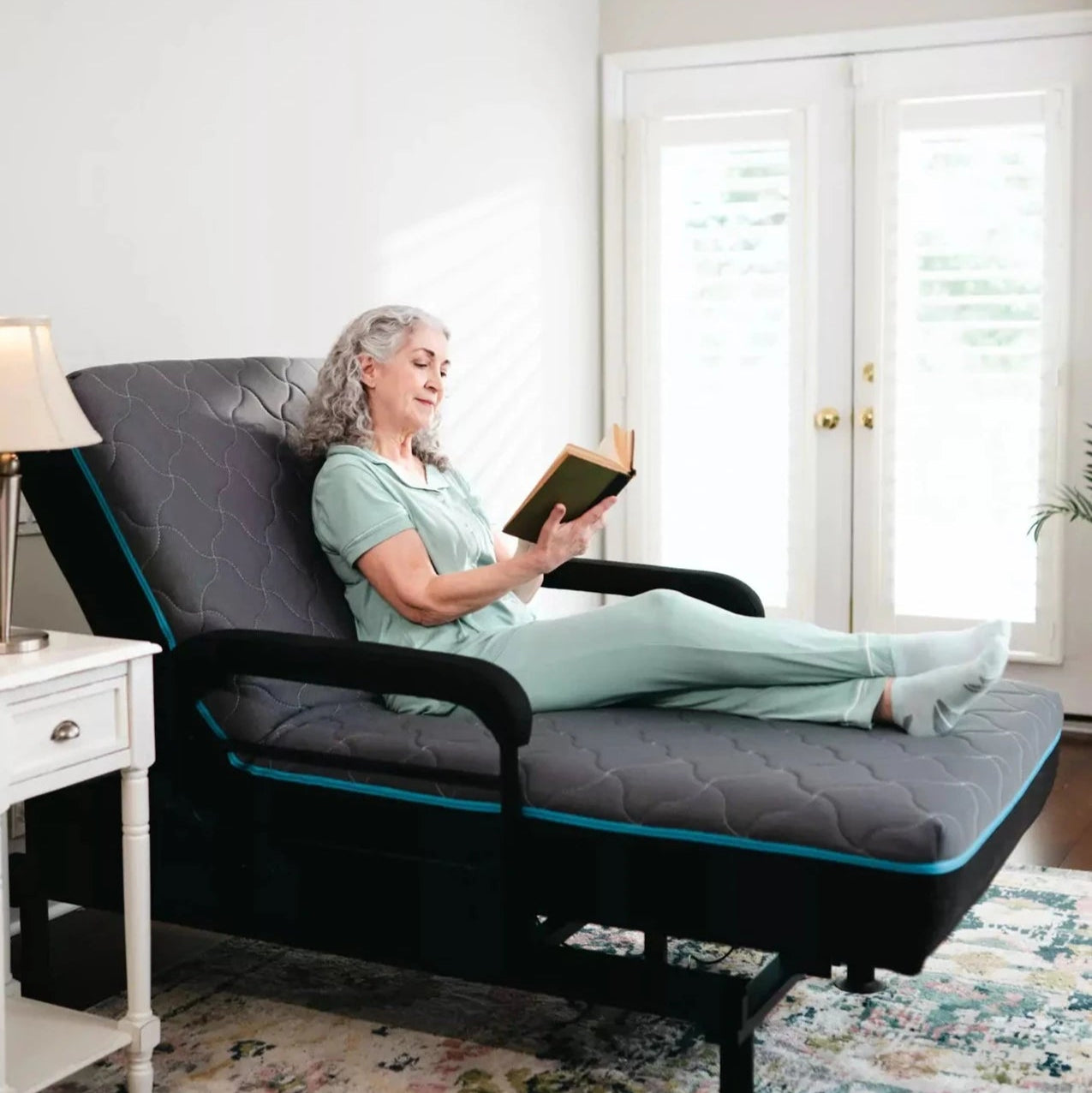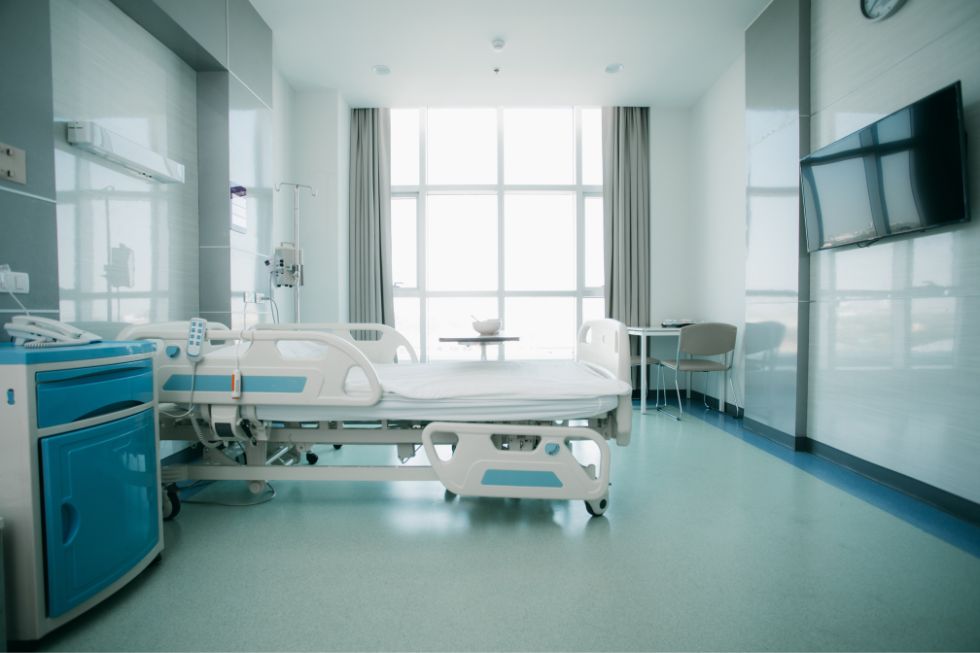The Main Principles Of Hospital Beds For Home Use
The Main Principles Of Hospital Beds For Home Use
Blog Article
The Only Guide to Hospital Beds For Home Use
Table of ContentsHospital Beds For Home Use for BeginnersThe Hospital Beds For Home Use PDFsUnknown Facts About Hospital Beds For Home UseThe 4-Minute Rule for Hospital Beds For Home UseHospital Beds For Home Use Can Be Fun For AnyoneThe Best Guide To Hospital Beds For Home UseAbout Hospital Beds For Home Use
All adjustments are managed electrically, which is simple to run and very accurate. It appropriates for occasions where clients have restricted flexibility or need to adjust their posture frequently. Next, we will check out the attributes, makes use of, and Advantages and disadvantages of each type of healthcare facility bed in deepness. A hand-operated medical facility bed is one of the most fundamental kind of health center bed, and all modification features are accomplished through a hand-cranked device.These hand-cranked gadgets are normally installed at the foot or side of the bed, and the caregiver or person can change the height or tilt angle of the bed by drinking the take care of. Since no electrical components are called for, are generally less costly than electric hospital beds, ideal for clinical institutions or family members with restricted budget plans.
The Buzz on Hospital Beds For Home Use
For clients that require to adjust their pose or height regularly, manual beds might not be hassle-free enough due to the fact that each adjustment needs hand-operated operation. If the bed requires to be adjusted frequently, taking care of team might need to invest even more physical toughness to run the hand-cranked gadget - hospital beds for home use. Guidebook beds are generally appropriate for people in the recovery period or events with low nursing requirements
Generally, the adjustment of the back and legs is controlled by electric motors, while the total elevation adjustment still needs to be done manually. The function of this layout is to reduce costs and energy consumption while preserving high functional ease. Compared with manual health center beds, semi-electric hospital beds are much more convenient in changing the back and legs, particularly for clients that require to readjust their pose regularly.
Since only some functions count on electrical power, semi-electric medical facility beds take in less power throughout usage. Given that the overall height still requires to be readjusted by hand, it may not be as hassle-free as fully electric hospital beds for clients who require to adjust the bed height frequently. Compared to hands-on healthcare facility beds, semi-electric health center beds are a little more complex to operate, requiring users to grasp the mix of electrical and hand-operated procedures.
Electric hospital beds have high adjustment precision and can be exactly adjusted to a certain angle and elevation according to the demands of people to supply the most comfy support. All-electric medical facility beds are typically geared up with a selection of extra features, such as integrated scales, cushion pressure modification, and so on, to fulfill the special demands of different patients.
An Unbiased View of Hospital Beds For Home Use
A reduced bed is a particularly developed hospital bed that can be adapted to an extremely reduced level, normally just a few inches from the ground. The objective of this design is to minimize the threat of patients falling from the bed, especially for individuals that go to threat of falling, such as the elderly or individuals with limited wheelchair.

The Basic Principles Of Hospital Beds For Home Use
provide a care setting ideal for children's elevation and physique, increasing the comfort and safety of children. Some pediatric beds are also outfitted with vibrantly tinted bed rails or anime designs to decrease the fear of youngsters in the health center setting. For children that need to remain in bed for a lengthy time, pediatric beds are usually equipped with find this anti-bedsore bed mattress, adjustable bed rails and various other features to provide comprehensive treatment support.
The delivery bed is likewise equipped with postpartum recuperation functions, such as cushion modification, bed home heating, etc, to help moms recover much faster. The intensive treatment bed (ICU Bed) is developed for the critical care unit (ICU) and has detailed monitoring and nursing functions. This kind of bed is typically outfitted with user interfaces for a selection of tracking tools, which can keep track of the patient's important check in live, such as heart price, high blood pressure, respiration, etc.
The Only Guide to Hospital Beds For Home Use
The intensive care bed has a completely electrical change feature, which can promptly change the angle and placement of the bed to fulfill the needs of different treatments and treatment. The design of ICU bed takes into account the demand of rescue operation. The bed can be quickly adapted to the most suitable rescue posture and comply with using rescue equipment.
It can effectively isolate patients from the outside world and decrease the danger of infection transmission. Isolation beds are typically geared up with special bed drapes or securing covers and linked to air purification systems to keep the air around the bed clean. Seclusion beds are specially designed to stop next the spread of pathogens from infectious clients and protect the safety of various other individuals and medical personnel.
Seclusion beds are furnished with air purification systems that can filter microbes and particle issue in the air to keep the air around the bed tidy. Increased and reduced manually by a crank or a hand-held control. Crank, hand-held control, hand-operated laborRaised and reduced using an electrical motor. Can additionally be gotten used to different placements.
Not known Incorrect Statements About Hospital Beds For Home Use
Broader and tougher than a basic bed. Overweight, weight problems, individual sizeDesigned for people at danger of falling out of bed. Reduced to the ground than a standard bed. Patient falls, bed heightDesigned for kids. Smaller sized in size than a conventional bed. Pediatric medicines, child-sized equipmentUsed throughout giving birth. Geared up with features such as great site braces and a headrest.

In a medical care setting, picking the right bed can not just improve the effectiveness of care, yet likewise significantly improve client comfort and safety. By understanding the kinds and usages of these beds, health care centers and family caretakers can better sustain and take care of their individuals.
Hospital Beds For Home Use Fundamentals Explained
HomeCare Healthcare Facility Beds, a department of DiaMedical USA, is committed to supplying complete openness for its consumers. Clients can be overwhelmed by the various options in lengthy term care products, and HomeCare Medical facility Beds is dedicated to simplifying this process, while making certain customers obtain the information and assistance they require.
Medicare Component B (Medical Insurance coverage) covers medical facility beds as durable clinical devices (DME) that your physician recommends for use in your house. After you fulfill the Component B insurance deductible you pay 20% of the Medicare-approved quantity (if your provider accepts job). Medicare pays for different type of DME in various means.

Report this page